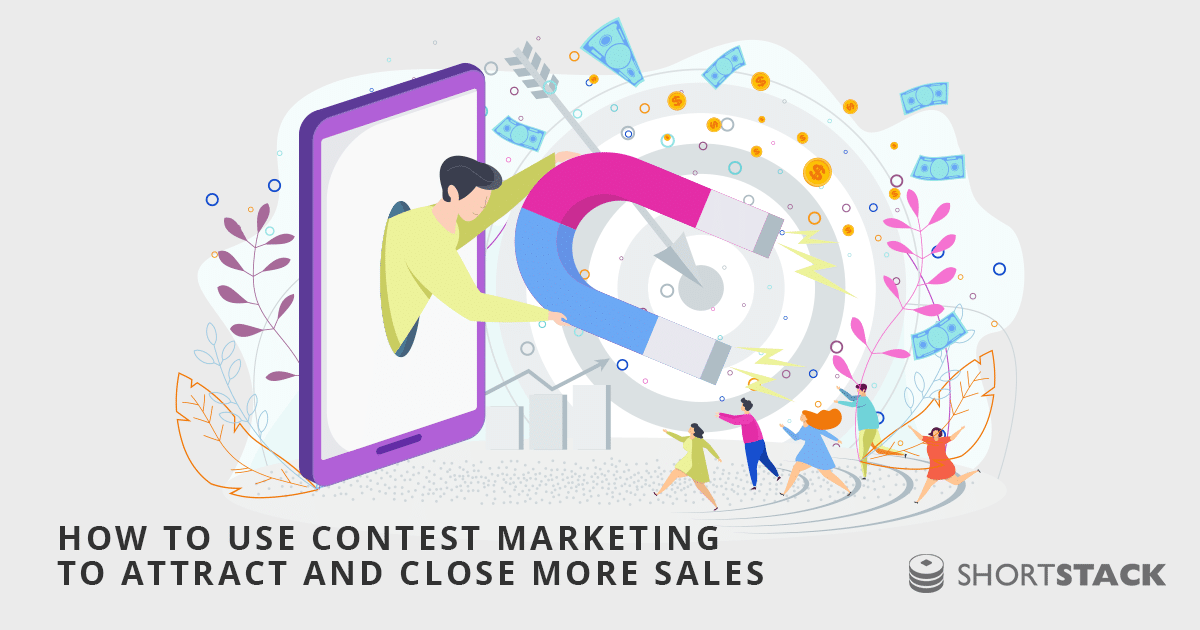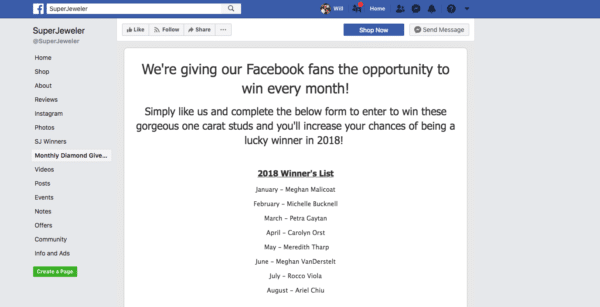How To Use Contest Marketing To Attract and Close More Sales

Learn how to use interactive marketing through contests to increase sales and engage with your ideal customers effectively.
The internet is crowded, loud, and competitive.There are countless blogs, websites, banner ads, social networks and video clips distracting your customers from what it is you have to offer. Rising above the noise to get quality leads that will convert into sales is more challenging than ever.Marketers are turning to an old favorite to better engage and interact with consumers - interactive marketing through contests. But how do you use contests to actually increase sales, instead of just filling up your database with passive observers?To be as effective as possible, contests need a well-thought-out and executed plan and superior follow-up strategy. Here are four ideas for closing more sales with your contest marketing strategy...
To be as effective as possible, contests need a well-thought-out and executed plan and superior follow-up strategy."
1. Define and Qualify Your Participants
Who are you targeting with your contest?If your answer is “everybody” you’d better have an unlimited budget and resources.Of course, most marketers don't have such deep pockets so it’s better to create a profile of who your ideal customer is - with plenty of specifics. This profile might include simple details like your customers’ age, education, career, and lifestyle. But another key characteristic of your ideal customer is to understand what triggers them to buy and when - this will be critical information for running a contest that will drive sales.One of the biggest mistakes marketers make is wasting time and resources with prospects who can't or won't ever buy from them. So, once you’ve defined your ideal prospects, make sure you use qualifiers in your contest entry form to eliminate time-wasters. Qualifying questions in a contest can help determine if entries are from ideal customers and where they are in the buying process. These questions go beyond basic demographic data and narrow down the information you collect to improve and personalize your follow-up marketing campaigns.
Qualifying questions in a contest can help determine if entries are from ideal customers and where they are in the buying process."
You'll want to keep questions non-threatening, especially early in the process, and make them as easy as possible to answer
2. Align the Prize to Your Product or Service
When you align your prize to your product or service, you are predetermining that entrants have an interest in what you are selling. To be as effective as possible, prizes should be compelling and have a high perceived value. Some ideas include:
- Limited Edition Items. Unique and limited edition items can have a high perceived value because they are “hard to get.” This helps make your prize unique, as it may be the only way for a prospect to get one. Professional Bull Riding teamed up with a Missouri western wear store to give away a unique prize, a special edition 4x4 ATV. The contest generated 70,000 entries!
- A Year's Worth of Prizes. Another attention-getting prize might be its sheer quantity. For example, enough of something to last a year. It may be a year's worth of pizza, monthly massages, weekly ride-sharing, movie tickets or other products and services that would appeal to your ideal customer. If it can appeal to your ideal customer, it should fall into alignment with your own product or service. Who wants a year’s worth of free sugar?!?

Example of yearly prize from a contest. View and Create Your Own.
- Packages and Bundled Prizes. Putting together packages of related items can attract attention and entries. Romantic weekend getaways, remodeling packages, fashion or beauty makeovers, and others are attractive. Keep in mind, however, whatever package you put together should relate in some way to your product or service. A variety of like-minded sponsors teamed up to develop a daily contest and offer a larger grand prize and multiple smaller gift card prizes. This contest has resulted in over 130,000 entries.
- Pick-a-Prize. When you give leads a choice of prizes to win, you are learning just a bit more about them. This can help you better determine what they want and where they may be in the sales funnel.
- Your Product or Service. There may be no better way to determine who is interested in your product or service than to give it away as a prize. If your product or service has a lower value, giving away multiple prizes can create interest and more entries because people recognize they have better odds of winning. Here is a Facebook contest from a jeweler that had resulted in over 68,000 entries from people with an obvious interest in diamond earrings.

Example of a monthly contest prize winner.
- Group Prizes. By giving away prizes for a larger group, you are helping create buzz and social sharing. When people begin to think about winning a weekend cruise for eight or tickets to a concert for 12, they think about who they would invite should they win. They may also be more likely to share contest details and encourage those they would invite to enter as well. Who would you take to Mexico with you?

Example of a group prize from a contest.
- Gift Cards. Gift cards have a high perceived value due to their versatility. Giving away gift cards that participants have to use at your store has the additional benefit of giving you the ability to see how the winner spent the money, providing further insight. A large retailer targeted college students and their parents by giving away a high-value gift card to encourage a college room makeover. The results? Over 249,000 entries!
3. Incentivize Sales With Time-Bound Offers
Once you have conducted your contest and qualified your entrants as prospects, it is critical to follow up with them. This starts by notifying them of the winner or winners in the contest and offering them a “consolation” prize such as a product or service discount or gift card. Then, it’s time to present a time-bound offer such as a discount or product bundle.Time-bound incentives and offers elicit urgency from your participants and influence them to make a purchase decision within the defined time frame. Delivered in the right way, time-bound offers generate additional awareness for your brand, and come to a climactic endpoint where prospects are fronted with a very clear decision - buy now, or don’t buy at all.
As well as creating a sense of urgency, this approach focuses on an old sales principle that a “no” is better than a “maybe.” Why? Because “maybes” are an inconvenient waste of time and headspace. You’re better off getting a decision now and moving onto prospects who are willing and able to be successful with your solution.Here are a few tips for ensuring your time-bound offer hits the mark after running a contest:
- Be timely so that contest participants are still familiar with your brand.
- Use several channels at once to create a tiered level of awareness for your brand and a multi-directional push for the offer. You would likely deliver your messaging and offer using email automation software and remarketing ads.
- Create a consistent experience across all channels to reinforce trust and brand equity.
- Make the offer compelling so that prospects feel as if they need to take it up now or lose out on something they care about.
- Use a real deadline and don’t budge. There is nothing worse than a brand who uses false urgency to sell something.
4. Monitor, Track, and Test
There are several moving pieces required to create an online contest… The promotion, the vehicle for entry, the selection of prizes, management of entries, follow up, customer service, and that’s just for starters. But, ultimately, you’re never going to know which contest tactics work unless you monitor, track, and test results.By tracking key metrics during and after your contest, you’ll be able to identify which types of content, platforms, prizes, and marketing messages resonate most with your ideal customers. Learn from this data to get a better return on your effort the next time you run a contest.You could set these metrics up for tracking using a free tool such as Google Analytics, or alternatively, use ShortStack's analytics which provides tons of valuable data, right in the platform. Here is a video on how it works:
In sum: Don't just collect email addresses... Build a list of ideal customers and increase your sales by testing and optimizing your approach to contest marketing!
Try a ShortStack template to create your first contest fast and easily.
Get Started Today. No credit card required. Risk-free.




